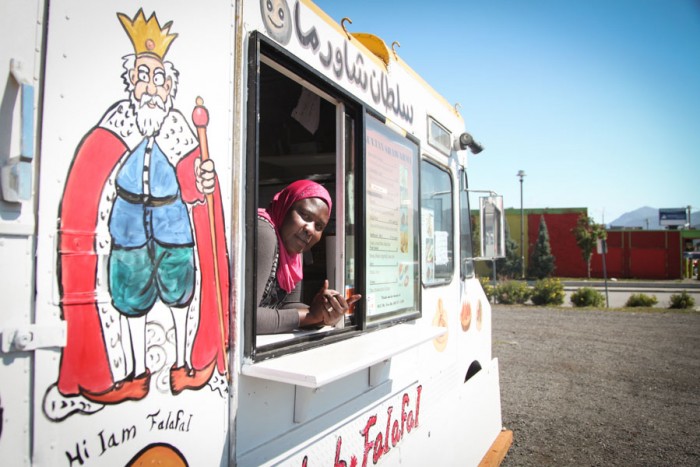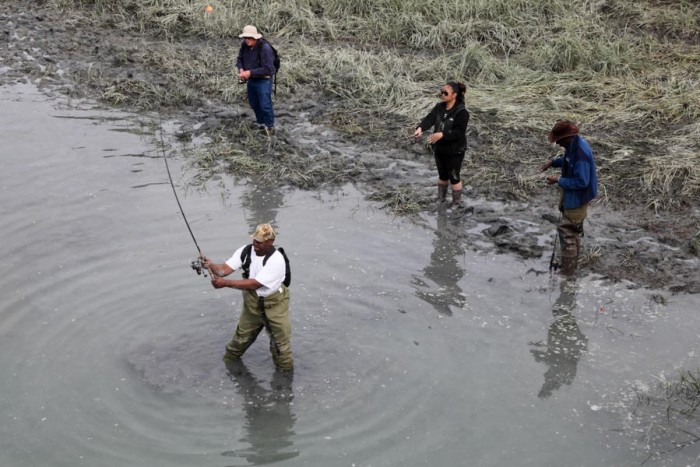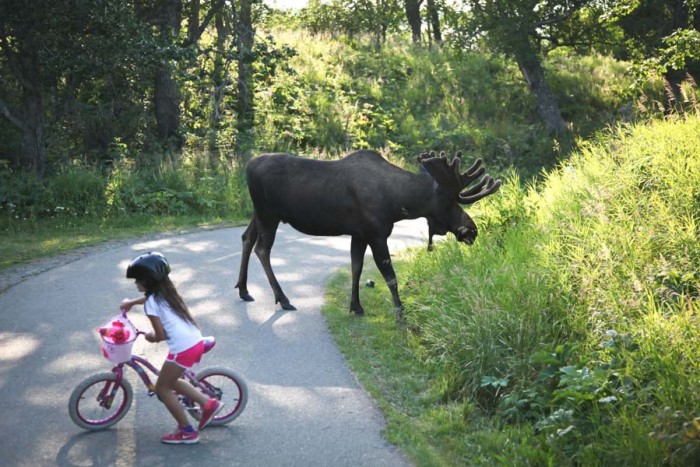
I was born and raised in the Pacific Northwest but somehow never made it to Alaska until last week. And like many in the “Lower 48,” my knowledge of this vast place was limited to some crude stereotypes: moose, snow and dog sleds.
I did not associate this state — launched into my generation’s popular imagination by Sarah Palin’s quip about Russia’s proximity to Alaska as proof of her foreign-policy chops — with superlative diversity or international savvy.
Turns out I was wrong, at least about one city here. Like metropolitan Seattle, Anchorage is a city that boasts some of the country’s most diverse neighborhoods and schools (despite a majority white population). And, like the Seattle area, this growing population is changing, and sometimes challenging, the city’s culture, identity and services.
“Thirty years ago, [Anchorage] was a mostly white, Caucasian community,” says Shirley Greeninger, refugee liaison for the Anchorage School District. “And now it’s just all kinds of ethnic backgrounds and immigrants and refugees and newcomers. …”
According to the Anchorage School District, 20 percent of its students speak a language other than English at home. Students speak over 90 languages including Spanish, Hmong, Samoan and Native Alaskan languages, like Yup’ik.
“People are coming for employment, for opportunity and to join families that are already here,” says Greeninger.
I learned more about what brings people to Anchorage while eating a hot, flaky sambusa last week. Sambusas are fried triangular pastries often filled with meat and vegetables. They’re also Omima Adam’s claim to fame.
Adam is a refugee from Sudan who arrived here five years ago. I’m in Alaska as part of a project reporting on Seattle-area immigrants and refugees who travel north for seasonal labor. My path crossed Adam’s when her food truck, “ Sultan Shawarma,” with its orca whale jumping toward bubble-lettered Arabic, caught my eye.
“When my husband came here, he told me, ‘OK, you need to know it’s very cold and snowing and you need to make yourself ready for that,’ ” says Adam, remembering how she wore multiple layers of socks in preparation. “Now, I’m freakin’ hot,” she laughs, referencing the day’s mild sunshine.
The “Sultan Shawarma” is in the Anchorage neighborhood of Mountain View, which was recently identified as America’s most diverse neighborhood by a demographer and sociology professor at the University of Alaska Anchorage.
That diversity — measured using census data — is attributed to a large Native population, a nearby military base, a sizable white population in Mountain View (which supports the case of diversity, according to the definition used in this study) and Anchorage’s designation as an “immigrant outpost.”
Mountain View looks like it could be an extension of Tukwila, home to much of King County’s diversity — a community where snowcapped mountain views, drive-through espresso huts and seafood distributors blend with Somali markets, Samoan churches and Pho joints.
Like the Seattle area, diversity here is increasing. Adam now attends what claims to be Alaska’s first mosque — a giant box of a building out past “Wild West Guns” and a yellow sign cautioning moose “xing.”
With that growth comes some challenges. A few are quirky, like how the Muslim community celebrates Ramadan (a holiday that requires fasting during the day) in a city where the summer sun doesn’t set until nearly midnight.
Others are more serious, like Anchorage’s seasonal economy, which can leave new immigrants unemployed (or underemployed) during the winter months, and a recent act of vandalism that some believe targeted Sudanese refugees.

Despite it all Adam, who since arriving has learned English, earned her high-school diploma, opened a business and become a citizen, says she’s glad she’s here.
“My customers, they talk to me so nicely and they give me tips and good [reviews],” says Adam, “I’m so glad I did this.”
She says people sometimes advise her to resettle somewhere less remote, with better weather and a bigger Sudanese population. With a little prodding from me, she concedes she’d like to take a vacation to Seattle (she imports the halal meat for her restaurant from there) but insists she’s happy where she is.
“It’s good, I like it,” she says beaming in front of her bright white truck adorned by a flowerpot. “I’m good here.”
Something Anchorage’s sambusa lovers should be glad to hear.


